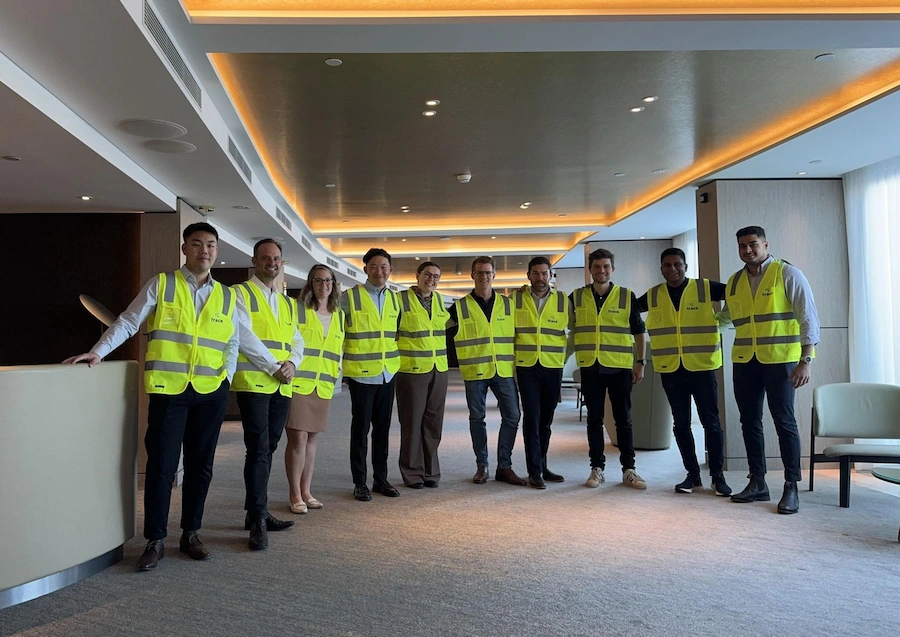Emergency Services and Emergency Response Supply Chains: Building Capability, Speed, and Resilience in Australia & New Zealand
1. Why Emergency Response Supply Chains Matter More Than Ever
Emergency services in Australia and New Zealand—police, fire, ambulance, defence, search and rescue, and specialist disaster recovery teams—operate in high-pressure environments where supply chain performance can be the difference between life and death.
When bushfires tear through regional Victoria, when cyclones hit Far North Queensland, or when earthquakes strike Wellington, these organisations need the right equipment, in the right place, at the right time—every time.
Unlike most commercial supply chains, these networks must operate with uncertain demand, unpredictable timing, and extremely high stakes. They can’t wait for supplier lead times to catch up or for a normal procurement process to run its course. They require pre-positioned inventory, flexible capacity, and rapid mobilisation protocols.
At Trace Consultants, we’ve seen firsthand how well-designed emergency response supply chains can save critical hours, reduce operational risk, and improve outcomes for both responders and communities.
2. What Makes Emergency Response Supply Chains Different
While they share some fundamentals with commercial supply chains, emergency response supply chains have distinct characteristics:
- Unpredictable Demand Profiles – Events may be seasonal (e.g., bushfire season) or completely unforeseen (e.g., pandemics, large-scale accidents).
- Critical Service Levels – Performance isn’t measured in DIFOT percentages alone—it’s measured in lives saved, property protected, and operational continuity.
- Multi-Agency Coordination – Fire services, police, defence, local government, and private contractors often operate in the same network during a crisis.
- Geographic Reach – Coverage must extend into remote and difficult-to-access areas.
- Surge Capability – Ability to rapidly scale resources, transport, and personnel.
- Resilience to Disruption – Supply lines must remain functional during infrastructure failure, extreme weather, or security incidents.
3. The Building Blocks of an Effective Emergency Response Supply Chain
3.1 Pre-Event Preparedness
Preparedness is the foundation. This involves:
- Demand Scenario Modelling – Understanding likely event types and volume surges.
- Strategic Stock Positioning – Locating supplies in depots or forward bases close to risk areas.
- Contracted Standby Resources – Agreements with suppliers and logistics providers to mobilise at short notice.
3.2 Real-Time Visibility
In emergencies, leaders need a live view of:
- Current stock levels and locations.
- Resource status (e.g., vehicles, medical teams).
- Transport availability and estimated arrival times.
3.3 Flexible Sourcing and Distribution
Supplies may need to be redirected mid-transit or sourced from non-traditional vendors. Multi-modal transport (road, air, sea) is often critical.
3.4 Rapid Mobilisation Protocols
Clear processes for activating resources, escalating requests, and bypassing non-essential steps during emergencies.
3.5 Inter-Agency Collaboration
Shared platforms, data standards, and joint planning exercises improve coordination across organisations.
4. Common Weaknesses in Current Systems
Across Australia and New Zealand, emergency response networks sometimes face:
- Fragmented Systems – Different agencies using incompatible technology platforms.
- Lack of Stock Visibility – No single view of available assets across the network.
- Over-Reliance on Manual Processes – Slowing down mobilisation.
- Limited Surge Planning – Insufficient contracted capacity or pre-approved supplier arrangements.
- Post-Event Bottlenecks – Slow replenishment after major events, leaving gaps in readiness.
5. Designing for ANZ Realities
5.1 Geography
Both Australia and New Zealand have vast rural areas, long distances between population centres, and regions prone to isolation during extreme events. Pre-positioning stock and mobile capability is essential.
5.2 Climate & Seasonal Risk
- Bushfires in summer and early autumn.
- Cyclones in the north during warmer months.
- Flooding in low-lying areas.
- Severe winter storms in alpine and southern regions.
APS-style scenario planning, adapted for emergency needs, allows agencies to forecast and plan for these patterns.
5.3 Cross-Border Support
State-to-state and trans-Tasman cooperation is common. Designing processes for asset sharing and redeployment improves resilience.
6. Technology’s Role in Modern Emergency Response Supply Chains
Technology is no longer optional—it’s an enabler for speed, coordination, and accountability.
- Asset Tracking Systems – RFID or GPS to monitor critical equipment and vehicles.
- Supply Chain Control Towers – Providing a live, integrated view of supply and demand.
- Mobile Apps for Field Teams – To request, confirm, and receive supplies in the field.
- Data Integration with Suppliers – Enabling automated replenishment triggers.
Trace Consultants works with agencies to select and implement fit-for-purpose solutions—ranging from full-scale planning systems to tactical low-code tools that can be deployed rapidly.
7. Workforce and Resource Planning
Emergency response isn’t just about physical supplies—it’s also about the people who operate the systems, equipment, and vehicles.
Effective workforce planning for emergency supply chains covers:
- Skill Availability – Ensuring trained personnel are ready for mobilisation.
- Shift & Rostering Systems – Balancing fatigue management with operational demand.
- Cross-Training – Increasing workforce flexibility.
- Volunteer Integration – Managing large-scale community volunteer involvement during crises.
8. Supply Chain Resilience Principles for Emergencies
To build resilience:
- Diversify Suppliers – Avoid dependency on a single source.
- Pre-Negotiate Contracts – Include surge pricing and mobilisation clauses.
- Build Redundancy in Transport Modes – Keep options open for road, rail, air, or maritime movement.
- Invest in Data Redundancy – Ensure systems remain operational even during power or connectivity loss.
- Run Regular Simulations – Test readiness under realistic conditions.
9. The Role of Private Sector Partners
Many emergency responses rely on private sector partners—logistics providers, construction companies, equipment suppliers—to augment government capabilities. Building strong, tested relationships is essential for quick mobilisation.
10. How Trace Consultants Can Help
At Trace Consultants, we help emergency services and supporting agencies design, optimise, and implement emergency response supply chains that are ready for real-world challenges.
Our support typically includes:
- Current State Assessment – Reviewing readiness, resilience, and response capability.
- Network Design – Determining optimal stock locations, depot layouts, and distribution flows.
- Technology Selection & Deployment – Implementing tools for visibility, tracking, and scenario modelling.
- Supplier & Contract Strategy – Creating agreements that enable rapid, scalable response.
- Workforce & Rostering Integration – Ensuring personnel capability aligns with supply capacity.
- Post-Event Review Frameworks – Capturing lessons and embedding continuous improvement.
Because we’re independent and vendor-agnostic, our recommendations are shaped solely around your operational needs and constraints.
11. Measuring Success
An effective emergency response supply chain can be measured by:
- Mobilisation Time – How fast resources are deployed after an event trigger.
- Fulfilment Accuracy – Whether the right supplies reach the right location.
- Surge Capacity – Ability to meet peak demand without failure.
- Post-Event Recovery – Speed of stock and capability replenishment.
- Inter-Agency Coordination Scores – Quality of collaboration during joint responses.
12. Future Trends in ANZ Emergency Response Supply Chains
- AI for Event Prediction – Using climate, social, and infrastructure data to forecast potential incidents.
- Drones for Rapid Delivery – Especially in remote or inaccessible locations.
- Sustainable Readiness – Balancing preparedness with environmentally responsible practices.
- Digital Twins – Simulating emergency scenarios and testing supply chain response before a real event occurs.
Final Thoughts
Emergency services and emergency response supply chains in Australia and New Zealand operate under unique pressures. The stakes are higher, the conditions more unpredictable, and the margin for error far smaller than in most commercial contexts.
With the right design, governance, technology, and partnerships, these supply chains can deliver speed, resilience, and life-saving reliability. The key is preparation—because when the event hits, it’s already too late to start building capability.
Trace Consultants brings the strategic insight, operational depth, and practical delivery experience to help emergency services plan, adapt, and perform when it matters most.










